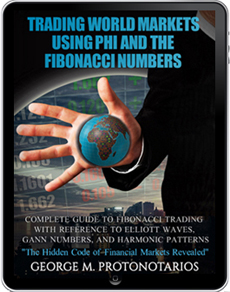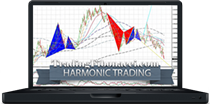
Introduction to Commodity Trading
What is a Commodity?
A commodity is a raw material used to produce a final product. It can be a metal, an agricultural product, or an energy resource. These goods are standardized, meaning each unit of a particular commodity—like a barrel of oil, an ounce of gold, or a bushel of wheat—is uniform in quality and specifications regardless of its origin. Commodities typically meet three key criteria:
-
Tradability
-
Deliverability
-
Liquidity
Key Features of Commodities:
-
Standardization: Commodities are traded in consistent grades and quantities, such as “Brent Crude Oil” or “No. 2 Yellow Corn.”
-
Fungibility: One unit of a commodity is interchangeable with another of the same type, so gold from one mine holds the same value as gold from another.
-
Physical Asset: Unlike stocks or currencies, commodities are tangible products derived from natural resources.
-
Bulk Trading: Commodity transactions usually involve large volumes, for example, thousands of barrels of oil or bushels of soybeans.
What Affects Commodity Prices?
Several factors can affect commodity prices, such as weather conditions or major shifts in the macroeconomic environment.
-
Supply: Weather conditions, mining output, geopolitical stability, and storage capacity.
-
Demand: Economic growth, industrial use, and population trends.
-
Currency Movements: Since commodities are priced in U.S. dollars, a stronger dollar usually leads to lower commodity prices.
-
Macro Trends: Transition to green energy, trade policies, tariffs, and related developments.
Categories of Commodity Assets
All commodities are divided into three major categories:
1. Precious, Rare, and Industrial Metals
1.1 Precious Metals: Gold, Silver, Platinum, Palladium
1.2 Industrial Metals: Copper, Steel, Aluminium, Cobalt, Nickel
1.3 Rare Metals: Rhodium, Titanium, Indium, Germanium, Cadmium, Magnesium, Chromium, Beryllium, Niobium, Manganese, Silicon, Selenium, Lithium, Vanadium, Wolframite, Tantalum, Gallium, Tellurium
2. Agricultural and Livestock Commodities
2.1 Agricultural Commodities: Corn, Oats, Rice, Soybeans, Soybean Oil, Wheat, Milk, Cocoa, Coffee, Cotton, Sugar, Orange Juice
2.2 Livestock Commodities: Lean Hogs, Frozen Pork, Live Cattle
3. Energy Commodities
-
Energy commodities include Brent Crude Oil, WTI Crude Oil, Natural Gas, Heating Oil, Ethanol, Propane, and Purified Terephthalic Acid.
4. Environmental Commodities
-
Carbon credits, Renewable energy certificates (RECs)
Table: Key Commodity Assets & Trading Information
| Commodity | Contract Size | Primary Exchange | Ticker Symbol | Commodity | Contract Size | Primary Exchange | Ticker Symbol |
| Energy | Agriculture & Grains | ||||||
| Brent Crude Oil | 1,000 barrels | ICE | B | Corn | 5,000 bushels | CBOT | C / ZC |
| WTI Crude Oil | 1,000 barrels | NYMEX | CL | Wheat | 5,000 bushels | CBOT | W / ZW |
| Natural Gas | 10,000 MMBtu | NYMEX | NG | Soybeans | 5,000 bushels | CBOT | S / ZS |
| Heating Oil | 1,000 barrels | NYMEX | HO | Soybean Meal | 100 short tons | CBOT | SM / ZM |
| RBOB Gasoline | 1,000 barrels | NYMEX | RB | Rough Rice | 2,000 cwt | CBOT | ZR |
| Precious Metals | Soft Commodities | ||||||
| Gold | 100 troy ounces | COMEX | GC | Coffee (Arabica) | 37,500 lbs | ICE | KC |
| Silver | 5,000 troy ounces | COMEX | SI | Cocoa | 10 metric tons | ICE | CC |
| Platinum | 50 troy ounces | NYMEX | PL | Cotton | 50,000 lbs | ICE | CT |
| Palladium | 100 troy ounces | NYMEX | PA | Sugar No. 11 | 112,000 lbs | ICE | SB |
| Industrial Metals | Orange Juice (FCOJ) | 15,000 lbs | ICE | FCOJ-A | |||
| Copper | 25,000 lbs | COMEX | HG | Livestock | |||
| Aluminum | 25 metric tons | LME | - | Live Cattle | 40,000 lbs | CME | LE |
| Zinc | 25 metric tons | LME | - | ||||
| Nickel | 6 metric tons | LME | - | ||||
Major Commodity Exchanges
Commodities exchanges are financial markets that offer products such as options and futures contracts, with commodities serving as the underlying assets. Below are some of the world’s major commodities exchanges along with links to their homepages.
|
Commodity Exchange |
Website |
Physical Location |
|
Chicago, US |
|
|
Part of the CME Group |
New York City, US |
|
London, UK |
|
|
Atlanta, US |
|
|
Mumbai, India |
|
|
Sydney, Australia |
Commodities Trading & Trading Strategies
Commodities can be traded in several different ways:
-
Spot Trading
Spot transactions involve the immediate delivery of the commodity.
-
Forward Contracts
A forward contract is a predetermined agreement between two parties to exchange a specified quantity of a commodity on a set future date at a price agreed upon today.
-
Derivatives Contracts (Futures & Options)
Derivatives are financial products such as futures, classic options, and binary options that function similarly to forward contracts. The difference is that futures or options can be bought or sold at any time, and you purchase the right—but not the obligation—to deliver the commodity in the future. Futures and options are widely used for hedging market risk as well as for speculation.
Why Trade Commodities?
Commodity trading can be useful for hedging your portfolio and profitable for speculation using futures contracts.
-
Hedging: Producers and consumers (like farmers or airlines) use commodity markets to lock in prices and protect themselves from unfavorable price swings.
-
Speculation: Traders aim to profit from price changes without the need to handle the physical goods.
-
Diversification: Commodities often move independently from traditional assets like stocks and bonds, providing portfolio balance.
-
Inflation Protection: Commodity prices tend to rise when the value of currency declines, serving as a hedge against inflation.
-
Geopolitical and Sentiment Factors: Prices are influenced by events like natural disasters, conflicts, or shifts in demand.
Commodity Trading Strategies
A. Hedging vs. Speculation
-
Hedging: Producers and companies lock in prices to stabilize their income and reduce risk. For example, a cereal manufacturer might purchase wheat futures to protect against losses from potential crop failures.
-
Speculation: Traders aim to profit from price volatility by employing various approaches:
-
Trend Following: Buying when short-term moving averages (e.g., 50-day) cross above long-term averages (e.g., 200-day). This strategy is common in energy commodities, which often exhibit strong trends due to supply constraints.
-
Mean Reversion: Betting that prices will return to their historical average, such as gold prices stabilizing during steady economic conditions.
-
B. Technical Strategies
-
Breakout Trading: Taking positions when prices break key support or resistance levels, ideally confirmed by increased trading volume.
-
Indicator-Based Techniques:
-
Commodity Channel Index (CCI): Readings above +100 suggest the market is overbought, while below −100 indicates oversold conditions.
-
Bollinger Bands: Used to detect periods of low volatility, signaling potential upcoming price moves when the bands contract.
-
C. Fundamental Strategies
-
Supply and Demand Analysis: Monitoring factors such as:
-
Weather Events: For instance, El Niño’s impact on coffee production.
-
Geopolitical Moves: Actions like OPEC+ production cuts that influence energy prices.
-
-
Macro Drivers:
-
USD Correlation: Typically, a 1% increase in the U.S. dollar leads to a 0.7% decline in commodity prices.
-
Economic Indicators: Industrial metals like copper tend to rally during periods of global economic expansion.
-
• Trading Commodities
TradingFibonacci.com
▶️ FIND OUT MORE AT TRADINGFIBONACCI.COM










